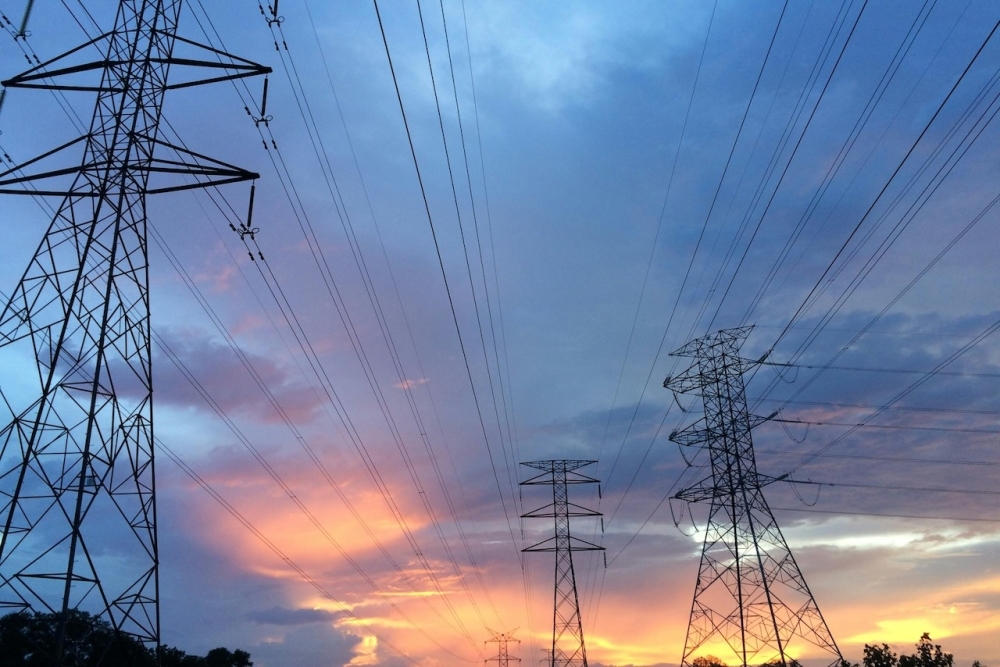Power outages in the Greater Houston area were down from 2.2 million in the region late July 8 to more than 1.5 million by the afternoon of July 9. (Courtesy Pexels/Pok Rie)
Tom Overbye serves as the director of Texas A&M University’s Smart Grid Center and is also a faculty member at the College of Engineering. He and his team specifically work on developing better engineering tools for electric grid-related situations including resiliency and severe weather impacts.
Community Impact interviewed Overbye about the current challenges when it comes to strengthening the electric power grid as well as the lessons learned on electric grid infrastructure after Hurricane Beryl left more than 2 million residents in the Greater Houston region without power. This interview has been edited for length and clarity.
Why was this storm so severe?
I think the issue with this event isn’t that some people lost electricity—that would be expected in a hurricane—but that so many people lost electricity. I think that will be an issue with the investigations.
… I had a hard time believing it when I looked at the numbers on the power outage map and it was over 2 million. This is more of a transmission distribution issue.
Beryl was mostly a wires issue. What I suspect happened is you have trees falling on distribution lines and you also have higher wind knocking over some transmission towers and distribution towers as well.
As extreme weather becomes more common in the Gulf Coast region, what is the long-term strategy here?
I think the conversation is going to be around building resiliency into the grid by hardening structures and providing the engineers with the best tools to plan the grid effectively, realizing that we can’t harden everything in the next couple of years. So we need to prioritize what gets hardened and look at which lines are at most risk and which ones are critical loads like hospitals.
When you mention hardening structures, can you explain more?
It’s making both the distribution and transmission lines structures themselves stronger. It’s about tree management. Vegetation management certainly plays a role in this. There’s some devices we can install on the distribution wires that if a branch comes in contact with it, it doesn’t go out of service for a long time. This is what we call Smart Grid Technology that helps us minimize outages.
It’s going to be a long-term effort over many years to harden the grid. When I’m talking about the grid, I’m mostly talking about the wires, but to some extent, substations as well. The transmission grid, what you need to do to harden it is to replace wooden towers [with] steel and concrete towers, and CenterPoint is in the process of doing that.
[CenterPoint] is also in the process of mostly getting rid of their 69 kV grid and replacing it with 138 kV with the stronger tower so that’s all good things to do; it just takes time to do.
Help explain the volts terminology.
Most people are familiar with volts, because in our houses, we have 120 volts and then we have 240 volts for the air conditioning and the stove. When we distribute electricity, if we want to move it longer distance, like 10 miles or more, we will operate the grid at a very high voltage.
In Texas, we mostly use the 345 kV, or 345,000 volt, systems, which is thousands of times higher than what you have in your home.
What’s the difference between the grids?
They’re divided into the high-voltage ones, which we call the transmission grid and then the lower-voltage ones, which are the distribution grid.
Should residents expect to lose power for a longer period of time?
I certainly sympathize with people that have lost electricity for days. We all know that Texas in July gets pretty hot. I don’t think your readers should expect to have so many people lose power during a Category 1 storm. There’s design standards on this. How come these circuits did not withstand what they were supposed to withstand?
The state knows this, and CenterPoint knows this, and [the Electric Reliability Council of Texas] knows this. We’re certainly available to help in doing the research that needs to be done to help make our grid better. Part of that research is when you have events like this and then you learn from them and make the grid better.
Tell us more about the Public Utility Commission of Texas’ investigation into the unexpected power outages during Hurricane Beryl.
CenterPoint is rightly focused on restoring service, and they have a lot of crews out restoring service and that’s their focus right now. Later on, an investigation will occur and look into what the forecasters were saying [and] when.
When we build with distribution circuits, there’s standards. One of the standards is that distribution lines should withstand 110 mph wind. In some locations, you can actually design 232 mph when I don’t think Beryl had wind at that speed. That surely will be an issue that the investigations will come look at and say, ‘Why did so many people lose electricity?’
So much of that is pending based on this investigation that we don’t have answers to right now.

